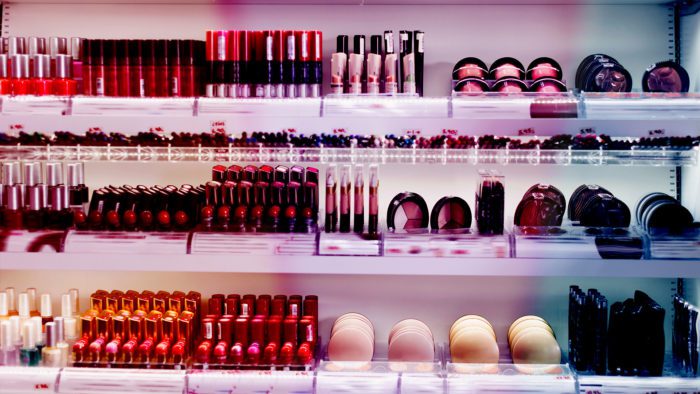At Newsletter Pro, we pride ourselves on how we use content to build real connections between businesses and their audiences. Often underutilized, relationship marketing provides a durable and effective way to improve a business’s retention rates, referral rates, and reactivation rates. Here are 8 great examples of relationship marketing to inspire small-business owners.

But First, What Is Relationship Marketing?
Hubspot explains relationship marketing like this:
“Relationship marketing refers to the marketing strategy of cultivating more meaningful relationships with customers to ensure long-term satisfaction and brand loyalty. Relationship marketing isn’t about short-term wins or sales transactions — instead, it focuses on delighting customers for the long haul.”
In other words, relationship marketing focuses on how to build emotional and personal connections with clients that compel them to maintain long-term loyalty. The end goal of any good relationship marketing strategy is for clients to feel deeply connected to your business.
But how are you supposed to form a relationship with every individual customer? That would be impossible! While it may be unrealistic to form a face-to-face relationship with every person who walks in through your doors, you can still use some key strategies to ensure your customers know how important their business is to you. Here are some key examples of relationship marketing that don’t involve meeting each customer.
Powerful Storytelling
An old adage in business says people “don’t buy what you’re selling. They buy why you’re selling it.” In other words, people love a good story and are willing to pay more to support brands that have one. Here are 2 examples of brands that have used the power of storytelling to endear their brands to the public.
#1. The Harmon Brothers
If anybody knows how to tell a compelling story, it’s the Harmon Brothers. They are one of the best examples of relationship marketing through storytelling. Using viral video campaigns and social media, they distribute humorous advertisements about various products (some of which can be characterized as “gross”).
From Poo-pourri to the Squatty Potty, the Harmon Brothers never shy away from telling great stories for brands they believe in. With over 1,540,497,000 cumulative video views (and counting), this marketing agency has shown the power a great idea and storytelling strategy can have on boosting a brand and endearing it to the public.
What makes the Harmon Brothers even more unique is their selective process regarding what clientele they agree to work with. As practicing members of The Church of Jesus Christ of Latter-day Saints, the brothers won’t work with brands that sell products or promote messages that don’t align with their values.
But that doesn’t mean the company isn’t willing to talk seriously about sensitive subjects. To quote Jeffrey Harmon, “There’s nothing in my beliefs that says, ‘You can’t talk about poo.’”
With several massively successful viral campaigns under its belt, this brand had more than lightning in a bottle — it has a replicable formula for telling incredible stories that resonate with customers and form relationships between brands and their audiences. Just check out some of the massive successes their clients have seen after launching their viral campaigns.
#2. Toms
Storytelling in marketing encompasses much more than simply how you tell stories through your advertising and the direct impact it has on your bottom line. Telling a great story is also about how you present the mission behind your brand. Toms is an excellent example of a company that has built long-term customer loyalty and relationships by sharing the story of its brand’s mission.
Many people know that for every pair of shoes you buy from Toms, a pair is given to a person in need. With outreach points worldwide, consumers were moved by the idea that they could help give back by buying and enjoying a great pair of shoes. Since the foundation of Toms, consumers’ charitable efforts have positively impacted over 100,000,000 people, and those efforts are being expanded yearly.
The popularity of Toms demonstrates the power of a great brand mission to motivate people toward long-term brand loyalty, which is why it remains one of the great examples of relationship marketing through storytelling.
Consistent Email Marketing
When they begin their email marketing journey, many companies make the mistake of only emailing their base when it’s time to announce a sale. However, if you want to maintain a marketing strategy that builds relationships, develop a consistent emailing schedule not centered solely around selling. Here is a great example of relationship marketing through email.
#3. Airbnb
Airbnb’s emails perfectly showcase how to provide users with consistent value without constantly asking for cash. Segmented to provide travelers and hosts with relevant information, Airbnb provides a list of valuable topics catered to the different interests of their audience.
Visually captivating with beautiful designs, these emails contain information on everything from Airbnb’s most unique guest houses to suggestions of activities to do in your chosen travel destination. With more variety, better customer service, and better relationship marketing, it’s no wonder 60% of consumers who have used both Airbnb and hotels prefer Airbnb lodging.
Rewarding Loyalty
If you want to build a meaningful relationship with anyone — including your customer — you need to learn how to express your appreciation genuinely. After all, why should a consumer buy from your brand when they get the same experience and price with your competitor? That’s why setting up an effective rewards program is so essential. Here is one of the best examples of relationship marketing through rewarding loyalty.
#4. Sephora
The Beauty Insider rewards program at Sephora is widely considered one of the best in retail and comes with various perks for members. These perks include a redeemable points program (where shoppers get 1 point for every $1 spent), birthday benefits, free or reduced shipping costs for online orders, access to exclusive sales, and more.
This rewards program has 3 tiers: Beauty Insider, VIB (Very Important Beauty Insider), and Rouge. Members can obtain the VIB status by spending $350 or more in a calendar year, and the Rouge tier is obtained when they spend $1,000 or more. The benefits gradually increase with each tier, with the higher tiers providing access to exclusive rewards and gifts.
With rewards members driving 80% of Sephora’s sales, it’s evident their program works and results in high levels of long-term loyalty from customers. That’s because Sephora has gone out of its way to show its most loyal customers their business matters and to reward frequent shopping. That provides the clients with further incentive to shop at Sephora instead of other retailers in order to maximize their benefit potential.
Encouraging Further Engagement
For many companies, when they are out of sight, they are out of mind, meaning their customers only think about them when they are buying from them. That’s not ideal if you’re trying to cultivate a real, tangible relationship with your customers. One great way to do this is through crowdsourcing campaigns and creating opportunities to foster outside engagement. Here are 2 great examples of relationship marketing of brands that use crowdsourcing to get their audiences excited about their brand.
#5. Lay’s
In 2015, Lay’s launched the “Do Us a Flavor” campaign. This contest allowed contestants to submit ideas for a new chip flavor, with the winner receiving a grand prize of $1 million. The winning chip would also be featured by Lay’s retail partners. This campaign not only encouraged widespread customer participation but also increased sales by 8% for the 3 months following the competition.
#6. Doritos
Doritos’ “Crash the Super Bowl” campaign began in 2006 with Super Bowl XL. This contest allowed everyday people to submit ideas for Doritos’ next Super Bowl commercial for the chance to win $1 million and have their ad featured. Though the contest has since been retired, it was a smashing success when it was running. It boosted Doritos’ value from a $1.5 billion company to a $2.2 billion company, and its net worth increased by 31%.
Adding Value Outside Of Purchases
Forming relationships with your customers involves more than your messaging, advertising, or storytelling. It’s also about the experiences customers have while interacting with your brand. Ensuring you prioritize your customers’ experience will allow you to provide more value to them beyond your products and services and ultimately help to endear them to your brand. Here are 2 great examples of relationship marketing through improving the customer experience.
#7. Chick-fil-A
It’s no secret Chick-fil-A is widely regarded as having the best customer service in the fast-food industry. While every business owner would agree that having good customer service is essential to running a successful business, they might be surprised just how much value is added by maintaining a standard of service that prizes going “above and beyond.” Chick-fil-A does, and that’s why they have seen unmatched popularity.
#8. IKEA
IKEA remains an extremely popular furniture retailer, with 458 stores around the world and over 700 million customers in 2021 alone. Part of the reason for its success is the way it provides value for its customers outside of its products.
Shopping in IKEA is designed to feel like a fun experience, with different designs set up to help consumers visualize how pieces would look in their houses. The Swedish cafeteria with meatballs, cakes, and lingonberry juice creates a pleasant atmosphere for shoppers to stop in for a bite to eat before picking up their selected products. This extra effort goes a long way to increase the value consumers perceive while shopping at IKEA.
Bonus Example: Newsletter Pro
While several of these major companies have engaged in tactics that build connections with their customers, without a unified relationship marketing strategy, they will always miss out on some crucial benefits. That’s why we wanted the last of our examples of relationship marketing to be a company that advocates combining these strategies into a comprehensive plan: us.
As a relationship marketing company with over a decade of experience, we’re well aware building connections is a multifaceted process. It can’t just be a promotion or an isolated benefit; it has to be consistent. That’s why many of the big brands listed as examples above don’t see the full returns they could get if their efforts were more organized and focused.
We believe small businesses have a unique opportunity when it comes to relationship marketing because they associate a human face with their marketing. Rather than coming across as an aloof multibillion-dollar corporation, small businesses are parts of communities and have special insights into the needs of their consumers.
So, when it comes to great examples of relationship marketing, the best ones we have seen are from our clients. The personal stories they share and the intimate connections they form with their audience are unparalleled and big brands cannot replicate them.
We also replicate this marketing for our own business and have seen amazing results. Beyond merely seeing more referrals and reactivations, we also retain our customer base longer. Many of our clients have been with us for several years, and they enjoy reading our newsletters as much as we enjoy creating theirs. Lots of our clients have noted they feel like they know our founder, Shaun Buck, after reading so many of his personal stories and insights. That’s pretty incredible, and those relationships are worth their weight in gold.
We hope this article was helpful to you wherever you are in your relationship marketing journey. By using a multifaceted approach to your relationship marketing strategy and learning from these key examples of relationship marketing, you, too, can start investing in connections with your customer base. This will translate to higher retention rates and loyalty levels for your most valuable clients.
To learn more about how to use relationship marketing for your business, you can fill out the form below to download our free Nurture Report.


Recent Comments